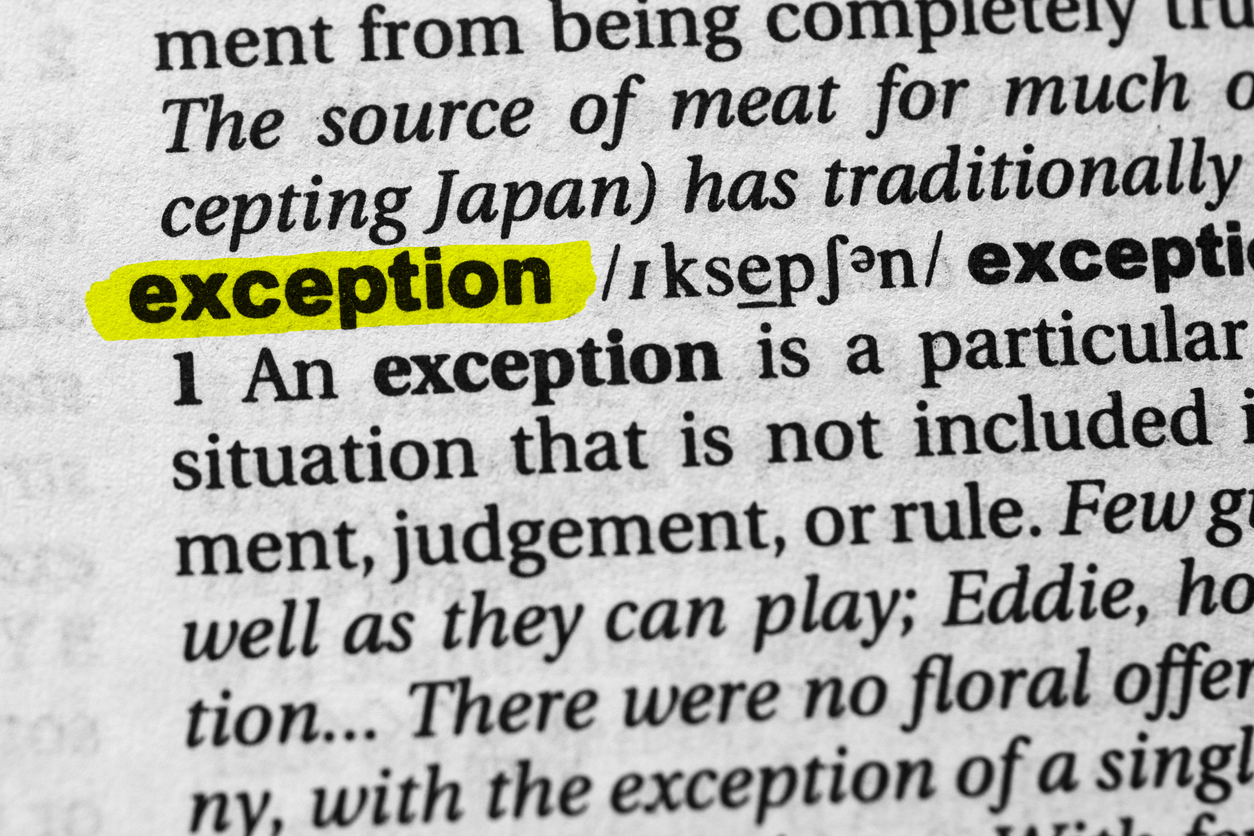Washington is one of the most pro-policyholder states in the country. As we recently noted in Dan Veroff Discusses Washington Insurance Law, Washington imposes severe penalties for mishandled claims. As a new example of the state’s commitment to protecting policyholders, the Washington Supreme Court issued an opinion on Thursday reaffirming a pro-policyholder principle established 12 years ago in a pair of opinions. Not only had the court already addressed the issue in the recent past, but in the new case, the intermediate appellate court already got the answer right and followed the existing precedent. The only court erring in the chain of events leading to the new decision was the trial court, which had already been reversed. Thus, the new opinion is not entirely necessary but much appreciated. While the subject had already been covered, the topic is complex, and new opinions ensure the law continues to be applied properly. Washington clearly cares deeply about its policyholders and ensuring the law is followed.
The Washington Supreme Court reaffirmed its stance on ensuing loss exceptions to exclusions established in 2012. The court confirmed that insurance policies with ensuing loss exceptions cover all ensuing losses, even when the policy says the exclusion applies even if it “initiates a sequence of events that results in loss or damage, regardless of the nature of any intermediate or final event in that sequence.” Thus, it affirmed that the exception covers even ensuing losses that are part of the same chain of causation as the excluded event.
Examples are the best explanation of this coverage provision for those unfamiliar. As an example, an insurance policy might exclude coverage to repair a broken plumbing component but cover the ensuing water damage to the home. As another example, a policy might exclude the cost to repair a construction defect like defective window sealing but cover the ensuing water damage from a rainstorm. Insurance companies have argued, as they did in the case before the Washington Supreme Court, that these ensuing loss provisions only apply to losses that are outside the normal and expected sequence of events from the excluded cause. Thus, insurers argue that water damage is expected from a plumbing break, so it is not part of the ensuing loss exception to the exclusion for broken pipes.
The Washington Supreme Court rejected this interpretation in two 2012 cases with different outcomes. In the first and primary case, it held that a collapse resulting from faulty workmanship was covered under an all risk policy with the same language that it evaluated again in 2024. 1 The insured in that case had an “all risk” policy that excluded coverage for losses caused by faulty workmanship, even if it “initiates a sequence of events that results in loss or damage, regardless of the nature of any intermediate or final event in that sequence.” It also included an ensuing loss exception, stating, “If loss or damage [caused] by a Covered Cause of Loss results [from the excluded event], we will pay for that resulting loss or damage.” The Supreme Court of Washington reversed the Court of Appeals and said nothing about a requirement that the covered peril be independent. Instead, it specifically rejected the argument that the resulting loss provision only “applies when an excluded peril causes a separate and independent covered peril.” 2
In the other 2012 case, the Washington Supreme Court found that the collapse of a deck was not an independent peril, and thus not an excepted ensuing loss, from the faulty construction and rot that caused its collapse in the first place. 3 The court reiterated the rule from the case mentioned above that under a resulting loss exception, resulting loss caused by an excluded peril is covered unless it is subject to its own exclusion. However, it held that the advanced decay of the fin walls was not a separate, ensuing loss covered by the policy. It found that whether the deck was in a state of collapse was irrelevant as the deck’s condition was the result of two excluded perils—defective construction and rot—and did not constitute a separate loss apart from those perils. Because “the natural process of deterioration will result in collapse,” it found that a collapse is merely the end result of deterioration and not a new and different peril from rot. 4
Given the opinions above, the Washington Supreme Court did not need to take on a new case on the subject, but we appreciate that it did so nonetheless. In The Gardens Condominium v. Famers Insurance Exchange, the Condominium found damage to its roof from condensation. The Condominium traced the damage to faulty design and construction of the building’s roof that prevented adequate ventilation, causing water vapor to condense on the underside of the roof. After believing they had repaired the damage, it was later discovered the fixes still did not allow for sufficient ventilation, resulting in further condensation and resulting property damage from the additional faulty workmanship.
The Condominium was insured under a Farmers “all risk” policy that excluded coverage for losses caused by faulty workmanship, with the same exact language stating that the exclusion applies even if it “initiates a sequence of events that results in loss or damage, regardless of the nature of any intermediate or final event in that sequence.” It also included an ensuing loss exception, stating, “If loss or damage [caused] by a Covered Cause of Loss results [from the excluded event], we will pay for that resulting loss or damage.”
The Condominium contended that Farmers did not have to pay the costs to repair the faulty workmanship but did have to cover the cost of the damage caused by condensation. In other words, the loss ensuing from the excluded event, condensation resulting from faulty workmanship, is covered as an exception to the exclusion. Despite the clear law, Farmers disagreed, arguing that “the resulting loss exception applies only if a covered event breaks the causal chain between the excluded risk and subsequent losses or if there is damage to other property.”
Despite two Washington Supreme Court opinions on the subject, the trial court agreed with Farmers by looking to authority from the Sixth Circuit Court of Appeals. However, Washington is not part of the Sixth Circuit, which applies laws of different states. The Court of Appeals reversed. Consistent with the two opinions referenced above, it reasoned that by including the resulting loss clause, Farmers agreed to pay for damage caused by a covered peril even when it results from faulty workmanship. Thus, if condensation and humidity are covered perils under the policy, the policy must cover damage caused by those perils. The court also pointed out that this court had never interpreted resulting loss clauses to preserve coverage only for damage caused by independent, unforeseen covered perils. The court remanded to the trial court to determine if condensation was a covered peril and, therefore, whether the resulting loss exception applied.
The Washington Supreme Court took the case and affirmed. 5 In so doing, it followed the existing precedent, specifically noting that the same language was at issue in one of the prior two cases on the subject. The court also noted that insurers could avoid this result by simply not including an ensuing loss exception.
Farmers argues this holding will mean ‘there could never be any excluded sequence of events.’ We disagree. Insurers are free to draft policies that contain ‘sequence of events’ causation language and do not have resulting loss exceptions to the exclusions. As Gardens correctly points out, Farmers could have drafted the policy differently to ensure that the entire causal chain resulting from an excluded peril would be excluded by not including a resulting loss exception or by limiting the exception.
Finally, the Washington Supreme Court briefly considered the insured’s secondary argument that the policy was ambiguous and should, therefore, be construed in favor of coverage. The court noted that it rejected the same argument in 2012. “Although this policy may be confusing, it is not ambiguous.”
The opinion was signed by all nine justices of the Washington Supreme Court.
1 Vision One, LLC v. Phila. Indem. Ins. Co., 158 Wn. App. 91 (Wash. App. 2010).
2 Vision One, LLC, 158 Wn. App. at 107.
3 Sprague v. Safeco Ins. Co. of Am., 174 Wn.2d 524, 276 P.3d 1270 (2012).
4 Sprague, 174 Wn.2d at 530.
5 The Gardens Condominium v. Famers Ins. Exchange, No. 101892-4, — Wn.2d — (Wash. Mar. 14, 2024).



